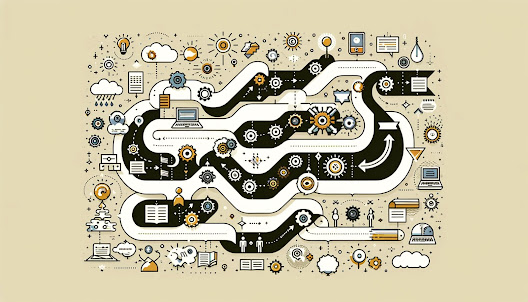Empowering Knowledge Through Clarity
As a father deeply invested in my daughter's educational journey, I've encountered a transformative phase in her learning curve: the shift toward expository writing. This revelation ignited my curiosity and fueled my desire to clarify this writing style for other parents. Expository writing, a cornerstone of non-fiction, strives to explain, inform, or describe subjects in a clear and concise manner. Its essence lies in shedding light on topics, presenting well-structured arguments, and conveying ideas without embellishing personal opinions.
The Versatile Landscape of Expository Writing
Expository writing unfolds across various formats, each serving a unique purpose:
Definition Essays: Illuminating Concepts
Definition essays serve as a beacon, guiding readers through the intricate meanings of concepts or terms. For instance, an essay might explore the notion of "democracy," dissecting its roots in ancient Greece to its contemporary implications in global politics. Alternatively, a piece could delve into "sustainability," tracing its evolution from environmental jargon to a pivotal element in modern business strategies.
Process Essays: The Blueprint of How-To
These essays act as detailed guides, illustrating the steps required to accomplish a task or understand how a system operates. A quintessential example is a step-by-step guide on baking a chocolate cake, outlining each stage from mixing ingredients to the final garnish. Another example could be an exposition on the water cycle, explaining the journey from evaporation to precipitation, making complex scientific processes accessible to all.
Cause and Effect Essays: Exploring Interactions
This form of writing probes into the nexus between events or phenomena, unveiling the reasons behind occurrences and their outcomes. One is to analyze the consequences of global warming, linking industrial activities to climate change and its impact on biodiversity. Another essay could dissect the effects of digital technology on human communication, highlighting both the expansive connectivity it offers and the isolation it can foster.
Compare and Contrast Essays: The Art of Comparison
These essays draw parallels and distinctions between subjects, enriching the reader's understanding through contrast. A comparative study might juxtapose the philosophies of Keynesian economics versus classical economics, providing insights into their differing approaches to fiscal policy. Alternatively, a piece could compare the narrative structures of Shakespearean tragedies with modern-day cinema, revealing timeless themes in storytelling.
Descriptive Essays: Painting with Words
Descriptive essays craft vivid imagery in the reader's mind, offering intricate portrayals of people, places, or things. An essay could transport readers to the heart of the Amazon Rainforest, describing its lush biodiversity and the symphony of sounds at dawn. Another might provide a detailed account of an innovative technology, such as a smartphone, detailing its design, functionality, and impact on daily life.
Expository Writing in Practice: Beyond the Classroom
Predominantly found in academic research papers, essays, and reports, expository writing also permeates news articles, instructional manuals, and technical documentation. Its application extends beyond educational settings, aiding in disseminating knowledge across various fields.
Conclusion: A Beacon of Understanding in the Ocean of Information
Expository writing, committed to clarity and knowledge dissemination, is a beacon for learners and readers alike. As parents navigating the vast ocean of educational content, understanding and appreciating this writing style can significantly enhance our ability to support our children's learning journey. By exploring its various forms and applications, we equip ourselves with the tools to guide our children and foster a deeper appreciation for the intricate dance of words and ideas that expository writing embodies.














0 Comments